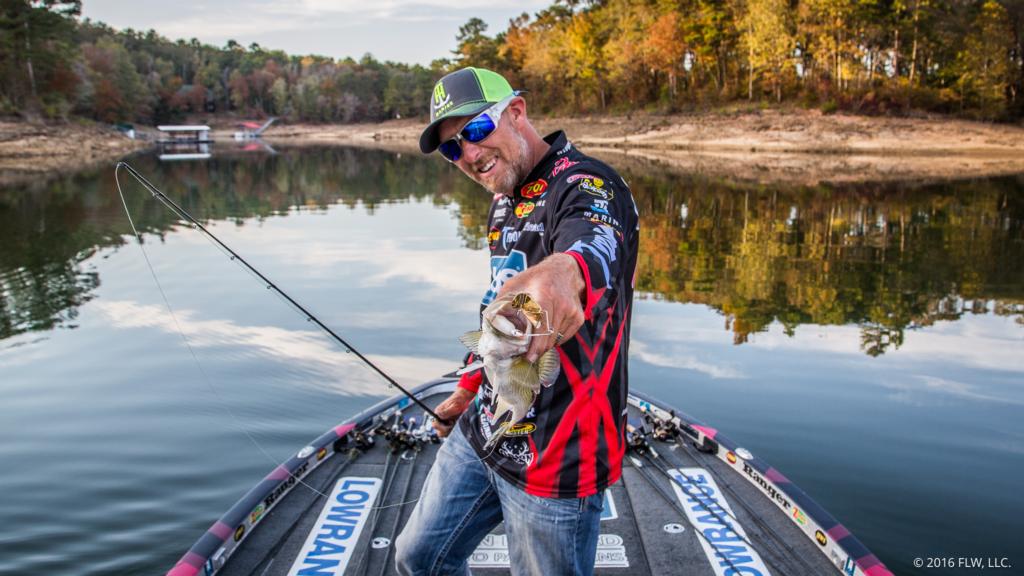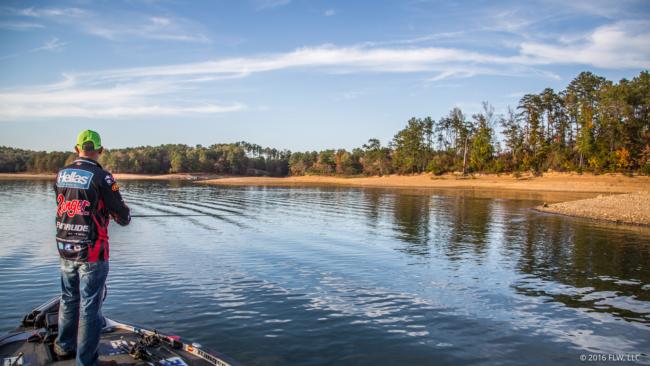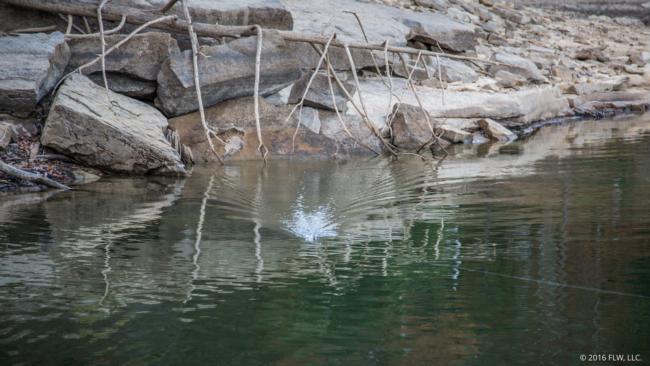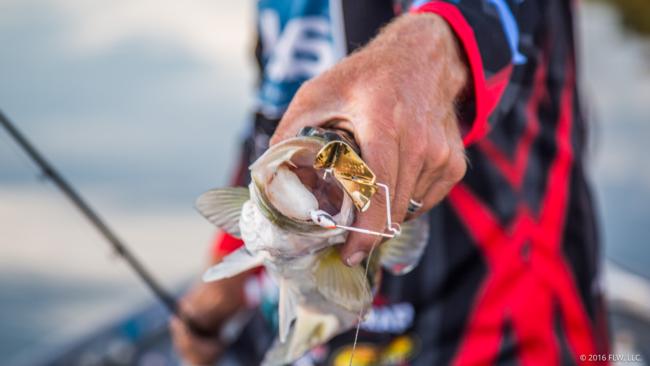Strader’s Fall Buzzbait Tactics
How the Tennessee pro applies a buzzbait as the water cools

Wesley Strader loves throwing a buzzbait, and he proved how successful he can be with it in recent Walmart FLW Tour Invitationals on Lake Norman and Norris Lake. Fishing third at Norman and fifth at Norris, Strader targeted shallow largemouths in early fall conditions and caught big portions of his weight on a buzzbait in each event. What follows is his recipe for success.
Seasonal patterns
As summer shifts to fall (and onward), a buzzbait is a great tool for covering water and catching enough fish to compete in a tournament as strong offshore patterns break up across the country. Though covering water is paramount, Strader usually concentrates on some specific targets.
“Typically I’m looking for flats, shallow water and isolated pieces of cover,” says Strader. “When the season transitions on into the fall I like running mud. Then when it gets colder I like running more rock because that holds the heat. At Norman it was all mud, no rock.”
Strader says that at Norris, with the water cooling into the low 70s, a mix of mud and rock did the trick for him. As the fall wears on, he’ll adjust his target selection more.
“When the water gets down into the 50s I start transitioning to rock,” says Strader. “It may not be vertical rock, but more like a flat bank or even the end of a laydown or docks with black floats.”
Strader usually begins his buzzbait fishing somewhere in a creek in the fall, but he begins to change that up as the winter approaches.
“As the water gets cooler and cooler you can migrate out toward the main channel too, toward main-channel rocks and seawalls and points,” says Strader. “If it looks good, fish it, I say. Then once you get on it you can run it. Fall is a great time to get on a pattern.”
Ideal conditions
A buzzbait will work under a lot of conditions, but Strader does have his preferences.
“I don’t like it post-frontal,” he says. “The first day after the front is OK, and I don’t mind throwing it on a bright sunny day, but not two days after a front.
“Typically, before a front is good, and I like intermittent clouds. I think you get more strikes and better hookups with intermittent clouds and a little wind. I don’t like it dead slick, and I don’t like it blowing 30. Just enough to break up the surface.”
When it comes to water clarity, Strader likes at least a little stain for a buzzbait. One other factor that Strader loves is a bubble trail. If the bubbles from your buzzbait are sticking around, the Tennessee pro says to expect success.
The winter?
There are plenty of stories of folks smacking them on topwaters and buzzbaits in the snow, but Strader doesn’t seek out those conditions for a buzzbait. Nonetheless, he does keep one around once it really gets cold.
“If you get a couple warm days in the winter it gets that water temperature up a bit,” says Strader. “I’ve actually caught ’em in like 48-, 49-degree water on a buzzbait.”
For winter conditions, Strader likes a 1/4-ounce buzzbait with a big blade, like what you’d find on 3/8-ounce bait. That big blade allows him to run the bait super slow, and it’s one of the few times of the year he’ll use a skirt instead of a toad on his buzzbait.
Tackle tips
Strader typically uses a Stan Sloan’s Zorro Head Knocker buzzbait. He likes it because the blade clacks against the head on the retrieve, and he says that outside of the spring, he usually goes with a clacking model. One time he always uses a clacking model is when he fishes tidal areas because, for whatever reason, tidal bass like the “extra clack.”
Outside of the spawn and occasionally the winter, Strader likes to roll with a Zoom Horny Toad in either white or black on his buzzbait. The Horny Toad is multi-purpose. It adds action and bulk and makes the bait easier to skip under docks. As for blade color, silver gets the call in clear water, and he doesn’t worry too much in dirty water, most often using gold, though he’s even caught fish with a chartreuse blade.
Strader usually sticks with a Lew’s reel and a Powell Max 3D 755 CB, which is a 7-foot, 5-inch composite rod with a moderate-fast action.
“It’s a multi-purpose cranking rod,” says Strader. “It’s got quite a bit of backbone, but enough tip. I typically throw it on fluorocarbon, like 16-pound-test Gamma Edge, or 50-pound-test braid.”
When it comes time to set the hook, Strader likes to wait until he can feel the weight of the fish (if he can wait that long), and then swings as hard as he can. Lately, to get even better hooksets, Strader has been using almost exclusively braided line, even though he feels it doesn’t handle quite as easily as fluorocarbon does.
How to jazz up the retrieve
Because of the nature of a buzzbait, there are only so many retrieves you can use and still make it buzz. Nonetheless, Strader does pay close attention to his retrieve.
“There are all kinds of little different things you can do with a buzzbait,” he says. “A lot of times I’ll pop it. It’s kind of the same thing you do with a spinnerbait when you bring it through a piece of brush. It’s clacking along, and it’s getting that quick surge, and a lot of times it will trigger a fish to bite.”
That said, just a straight retrieve is pretty good too. If you sit back and watch some GoPro video of Strader buzzing, you’ll see an awful lot of strikes come while the lure is just sputtering along the surface.


